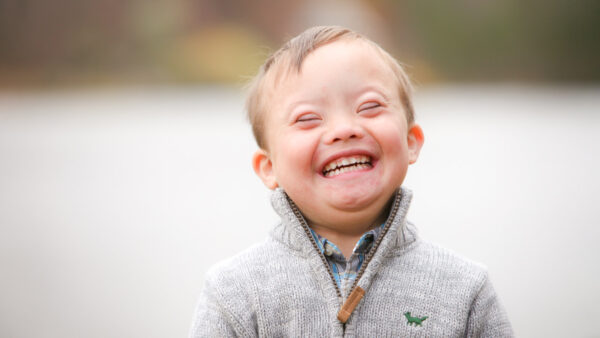Down syndrome is a genetic problem that happens when abnormal cell divisions lead to an additional partial or full copy of chromosome 21. This additional genetic material results in certain developmental changes.
The syndrome differs in severity and may cause developmental delays and/or lifelong intellectual disability. It’s the most common cause of learning disabilities in kids and also commonly leads to other medical abnormalities like gastrointestinal and heart problems. To detect signs of this syndrome, a Down syndrome test is helpful.
Symptoms
Developmental and intellectual challenges due to Down syndrome vary from mild to severe. While some individuals are healthy, others may have major health conditions like heart disorders.
Kids and adults with this syndrome have prominent facial features which often include:
- A small head
- A flattened face
- Brushfield’s spots (small white spots on the iris)
- Palpebral fissures (upward-slanting eyelids)
- A protruding tongue
- Small or unusually shaped ears
- A short neck
- Poor muscle tone
- Excessive flexibility
- Short height
- Broad, short hands and palms with a single crease
- Short fingers and small feet
Infants with this syndrome often have an average height and remain shorter and grow slower than other kids of the same age. A Down syndrome test can confirm the signs.
Causes
Human cells usually have 23 pairs of chromosomes. The chromosomes in every pair come from your mother and father. Down syndrome happens due to abnormal cell division that involves chromosome 21. As a result, an additional full or partial chromosome 21 is formed. This extra genetic material causes developmental problems and physical features associated with the syndrome.
Down syndrome can be caused by any of the following genetic variations:
- Trisomy 21: Mostly the syndrome is caused by trisomy 21. In this case, an individual has 3 copies of chromosome 21 rather than 2 copies in every cell. This happens due to abnormal cell division during the development of the egg cell or the sperm cell.
- Mosaic Down syndrome: This is a rare kind of Down syndrome where the individual has just some cells with an additional copy of chromosome 21. This mosaic of abnormal and normal cells forms due to abnormal cell division following fertilisation.
- Translocation Down syndrome: The syndrome can even happen when a part of chromosome 21 becomes translocated or attached to another chromosome during or before conception. These kids have extra genetic material from chromosome 21 translocated to another chromosome.
There are no known environmental or behavioural factors that contribute to Down syndrome.
Usually, the syndrome is not inherited except for Translocation Down syndrome. However, it occurs in very few children and not all of them inherit it from their parents.
When balanced translocations are passed on, the father or mother has some rearranged genetic material from chromosome 21 or any other chromosome instead of any additional genetic material. This means the parent has no symptoms of the syndrome but can pass on an unbalanced translocation to his/her kids. As a result, they can have Down syndrome.
A Down syndrome test can confirm the presence of the condition in a child. In case your little one has this syndrome, it’s a good idea to take him/her to a reputed paediatrician in electronic city.




